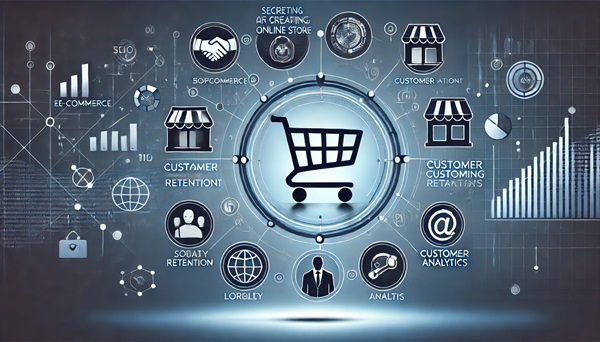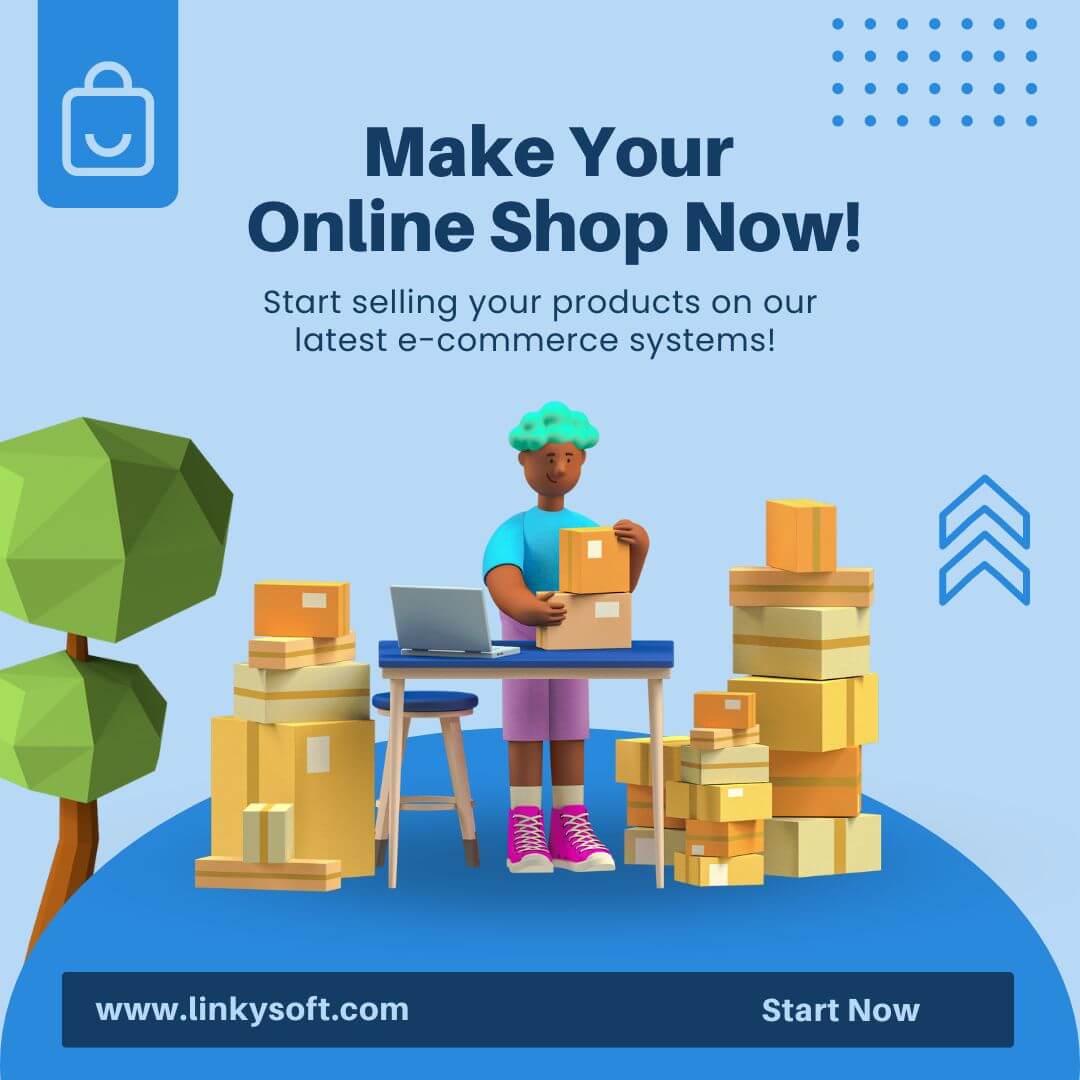As the digital landscape continues to expand, having a successful online store has become more than just an option for businesses—it's a necessity. With the rise of e-commerce, businesses that invest time and resources into building a robust online presence are poised for growth. However, simply having an online store is not enough to guarantee success. The real challenge lies in creating a store that stands out among the competition and ensures customers return time and again. In this article, we will delve into the secrets of creating a successful online store and retaining customers in the long term, covering strategies, tools, and insights that can set your e-commerce business apart from the rest.
Our journey will span across various elements of e-commerce, including understanding the market, optimizing your website, enhancing the checkout process, and implementing advanced customer retention strategies. Moreover, we will highlight how leveraging cutting-edge e-commerce management systems like those provided by Linkysoft can streamline operations and bolster long-term success.

1. Understanding Your Market and Audience
Before diving into the technical and operational aspects of your online store, it’s vital to first understand who your customers are and what they need. The success of an online store hinges on its ability to meet customer expectations effectively. Therefore, market research and understanding your target audience is the first secret to success.
Conducting Market Research
Market research is the foundation for every decision you’ll make when building and optimizing your online store. From product selection to marketing strategies, understanding the market helps you tailor your store to meet demand. There are several ways to conduct thorough market research:
- Analyze industry trends through platforms like Statista to understand where the demand lies in your niche.
- Use tools such as Google Trends to identify popular search terms and rising product categories.
- Study competitors to learn what strategies are working for them and how you can differentiate your store from theirs.
Customer Segmentation
Once you’ve gathered data on your market, segment your audience into different categories based on factors like age, location, gender, and purchasing behavior. By dividing your audience into distinct segments, you can create targeted marketing campaigns that speak directly to each group's needs. For example, a store selling beauty products might have different marketing strategies for teenage buyers compared to professionals in their 30s.
Example:
If you’re launching a high-end clothing store, you might identify two key segments: fashion-conscious young adults and business professionals looking for premium quality. Your website design, product offerings, and marketing messages should cater specifically to each of these groups.
2. Crafting a User-Centric and Responsive Website
After understanding your audience, the next step is to build an online store that offers a seamless and enjoyable user experience. Customers today expect more than just a functional website—they demand speed, ease of navigation, and a mobile-first approach. A well-designed, intuitive, and responsive website is key to attracting and retaining customers.
Mobile-First Design
With mobile shopping on the rise, it’s critical to prioritize a mobile-first design for your e-commerce store. According to Google’s mobile usage report, over 60% of all online shopping occurs on mobile devices. Ensuring your website performs flawlessly on smartphones and tablets can significantly improve user engagement and conversion rates.
Key Elements of a Mobile-First Design
- Simplified navigation with touch-friendly buttons and clear call-to-action (CTA) buttons.
- Fast-loading mobile pages, optimized by compressing images and reducing unnecessary scripts.
- Easy-to-read product descriptions and images that are optimized for smaller screens.
Implementing Responsive Design Principles
Responsive design is another key consideration. This approach ensures that your website automatically adjusts its layout based on the screen size of the device being used, providing an optimal experience for every user. Tools such as Google's Mobile-Friendly Test can help ensure your website meets these standards.
3. Optimizing Website Speed and Performance
Website speed plays a crucial role in user experience and directly impacts customer retention. Slow websites lead to higher bounce rates and cart abandonment. As a matter of fact, according to a study by Google, 53% of users abandon a website that takes longer than 3 seconds to load.
Speed Optimization Strategies
- Enable browser caching to store elements of your website locally on users' devices, reducing the time it takes to reload pages.
- Minimize HTTP requests by reducing the number of elements (images, scripts, stylesheets) that need to be loaded.
- Use a Content Delivery Network (CDN) like Cloudflare to distribute content from servers closer to your users, improving load times.
Image Optimization
Images are often one of the largest contributors to slow load times. Use image compression tools like TinyPNG or ImageCompressor to reduce the file size of your product images without sacrificing quality.
4. Creating a Frictionless Checkout Experience
The checkout process is the final step before converting a visitor into a customer, and a seamless, intuitive checkout can make or break the transaction. A well-optimized checkout process is essential for reducing cart abandonment rates and ensuring customers complete their purchases.
Best Practices for Streamlining Checkout
Research by Baymard Institute shows that 69.57% of online shopping carts are abandoned. To reduce abandonment, consider implementing the following strategies:
- Minimize the number of steps required to complete the purchase.
- Offer a guest checkout option to avoid forcing users to create an account before purchasing.
- Provide multiple payment options, including credit cards, PayPal, and digital wallets like Apple Pay and Google Pay.
Securing the Payment Gateway
Security is a major concern for online shoppers. Make sure your checkout process is secured with SSL certificates and use reputable payment gateways. Highlighting security features (like encryption) on the checkout page can reassure customers and reduce hesitation.
One-Click Checkout Options
For returning customers, implementing one-click checkout options—such as the “Buy Now” feature used by Amazon—can significantly reduce friction and boost conversion rates.
5. Leveraging Powerful E-commerce Management Systems
Managing an online store requires more than just a website. To run operations smoothly, you need a robust e-commerce management system that can handle everything from inventory tracking to customer relationship management. Linkysoft offers several solutions that cater to various business needs.
Cartz - A Comprehensive E-commerce Solution
Cartz is an e-commerce management system designed for single-vendor stores. It provides tools to manage inventory, track customer orders, and streamline the payment process. Cartz integrates with various payment gateways, making it an ideal solution for small to mid-sized businesses.
Togar - Multi-Vendor E-commerce System
If you're planning to run a marketplace with multiple vendors, Togar is the perfect solution. It offers tools for vendor management, commission tracking, and product reviews, giving you complete control over your marketplace operations.
Togar Pro - Advanced E-commerce Capabilities
For businesses that require advanced features, Togar Pro offers additional functionalities such as multi-currency support, advanced reporting, and a customizable vendor dashboard. This system is perfect for businesses aiming to expand globally or manage high-volume operations.
6. The Power of Customer Retention
Acquiring new customers can be five to twenty-five times more expensive than retaining existing ones, according to research by Harvard Business Review. Focusing on customer retention is not only cost-effective but also critical for long-term success. Loyal customers are more likely to make repeat purchases, refer your brand to others, and leave positive reviews, all of which contribute to a stable revenue stream.
Loyalty Programs
Creating a loyalty program is an excellent way to reward customers for repeat purchases and encourage them to keep coming back. Offer points for every dollar spent, which can be redeemed for discounts, free products, or exclusive services.
Tiered Loyalty Systems
Implement a tiered loyalty system where customers earn more benefits as they spend more. This not only motivates them to make additional purchases but also fosters a sense of exclusivity. For example, brands like Sephora have seen great success with their tiered loyalty programs, offering different perks at each level.
7. Enhancing Customer Support
Exceptional customer support is a hallmark of any successful online store. When customers encounter issues or have questions, having a responsive and helpful support team can make all the difference in whether they complete their purchase or abandon the process altogether.
Live Chat and AI Support
Offering live chat functionality allows customers to get real-time assistance without having to leave the checkout process. Tools like Intercom or AI-driven chatbots can automate this process, offering 24/7 support while saving on staffing costs.
Providing Self-Service Resources
In addition to live support, create an extensive FAQ section or knowledge base where customers can find answers to common questions. This not only reduces the number of support inquiries but also empowers customers to solve issues on their own.
8. Data-Driven Marketing Strategies
Marketing plays a crucial role in driving traffic to your online store and converting visitors into customers. However, for your marketing efforts to be effective, they must be backed by data and analytics. Understanding customer behavior through data can help you fine-tune your strategies and ensure you’re reaching the right audience with the right message.
Search Engine Optimization (SEO)
SEO remains one of the most cost-effective ways to drive organic traffic to your online store. By optimizing your site for search engines, you can ensure that potential customers find you when they’re looking for the products you offer. Targeting the keyword "Secrets Of Creating A Successful Online Store And Retaining Customers In The Long Term" in your product pages, meta descriptions, and blog content will improve your search rankings and attract more visitors.
Using Analytics Tools
Google Analytics and tools like Hotjar can help you track customer behavior on your website. Use this data to refine your marketing campaigns, adjusting where necessary to increase conversions and reduce bounce rates.
9. Evolving with E-commerce Trends
The world of e-commerce is constantly evolving, and staying ahead of the curve is essential for long-term success. By adopting the latest trends and technologies, you can offer your customers a better shopping experience while positioning your brand as a forward-thinking leader in the industry.
Adopting Emerging Technologies
Augmented Reality (AR) and Virtual Reality (VR) are becoming increasingly popular in e-commerce, particularly in industries like fashion and home decor, where customers benefit from visualizing products before buying. Implementing AR tools, such as virtual fitting rooms, can significantly enhance the shopping experience and reduce return rates.
Social Commerce Integration
Social commerce is another trend shaping the future of e-commerce. Platforms like Instagram and Facebook now offer integrated shopping experiences, allowing customers to purchase products directly through social media. Leveraging these platforms can help you reach a broader audience and drive more sales.
Conclusion
Building a successful online store requires a multi-faceted approach, combining customer understanding, strategic use of technology, and a focus on retention. By following the secrets outlined in this article, you can create an e-commerce store that not only attracts new customers but also keeps them coming back for more. Remember, the key to long-term success lies in constantly evolving, staying informed on the latest trends, and always putting your customers first. With the right strategies and tools, such as those offered by Linkysoft, your online store can thrive in an ever-competitive market.








